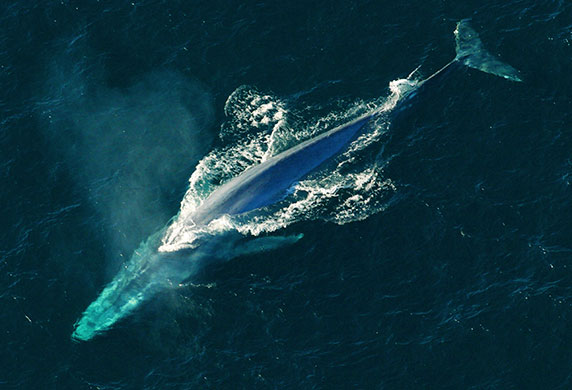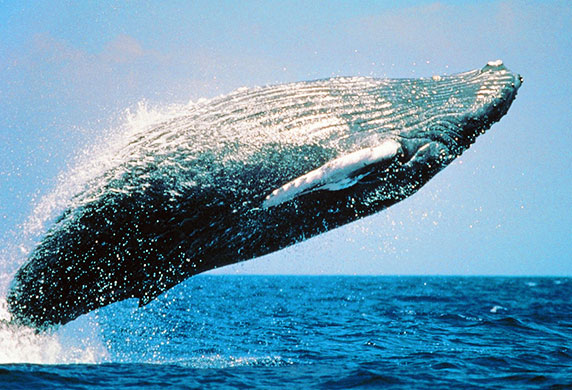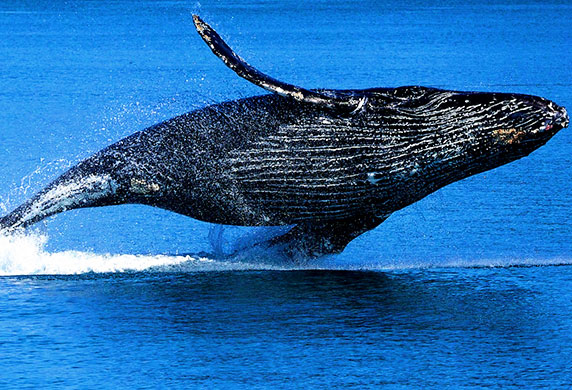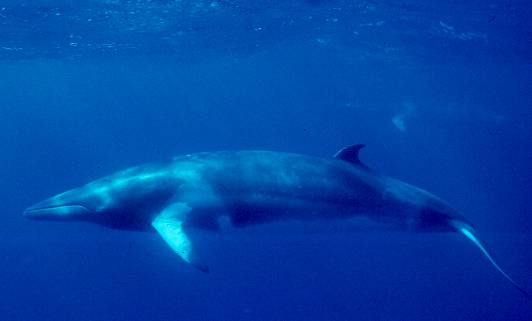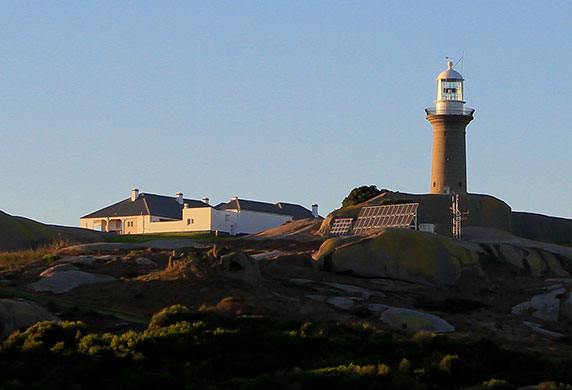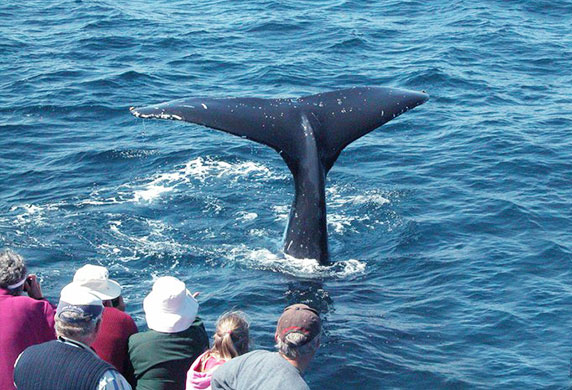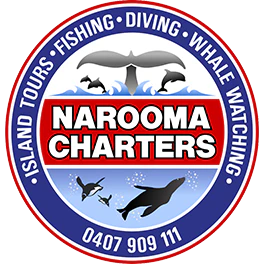The Humpback Whale
Humpback whales are known for their amazing behaviour – they will leap out of the water, roll in the air then crash noisily back into the water. This action is called breaching and it is still not known why they do it – for us it’s all just part of the fun! Popular theories include that it is done for for communication, or to breathe without sea spray in the air when it’s windy. The slapping of their tails against the water – which is a sight (and sound) to behold – is also thought to be the whales communicating.
Humpback whales have a small dorsal fin around two-thirds of the way down their back. The humpback whale’s back steeply arch as they dive – this is how they got their name and helps distinguish them from other species.
They have large pectoral fins, which can be up to a third in body length and black and white markings on the underside of the tail. The markings, like fingerprints, are unique to each whale.
The female is around 15-16m long while the male can be 13-14m long, like the blue whale the female is bigger in size.
In Narooma, the humpback is the most common whale to see on one of our whale watching tours.

